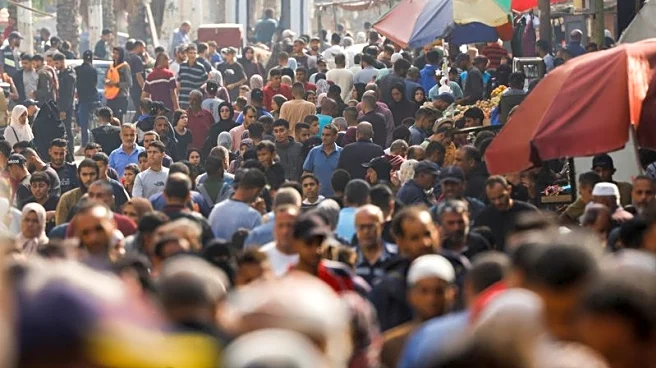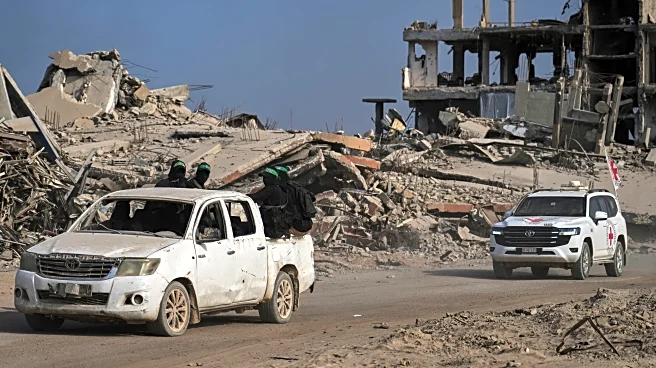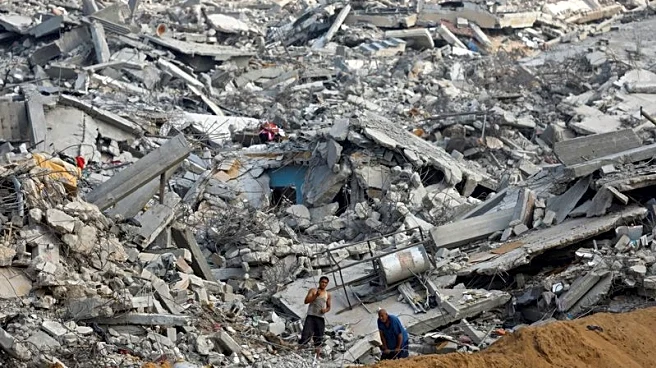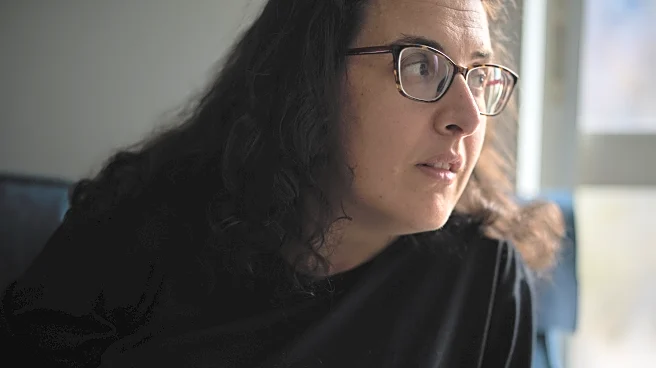JERUSALEM (AP) — Since the U.S.-brokered ceasefire in Gaza began on Oct. 10, Palestinian militants have released the remains of 25 hostages. But the process of returning the bodies of the three remaining
hostages, as called for under the truce deal, is progressing slowly.
Hamas says it has not been able to reach all of the remains because they are buried under rubble left by Israel’s two-year offensive in Gaza. Israel has accused the militants of dragging their feet and threatened to resume military operations or withhold humanitarian aid if all remains are not returned.
In the most recent release, Palestinian militants returned the remains of Meny Godard, who was abducted from Kibbutz Be’eri in southern Israel. His wife, Ayelet, was killed during the attack.
Godard was a professional soccer player before enlisting in the Israeli military and serving in the 1973 Mideast War, according to Kibbutz Be’eri. He served in a variety of different positions in the kibbutz, including at its printing press.
The armed wings of Hamas and the Palestinian Islamic Jihad said Godard’s body was recovered in southern Gaza.
In return, Israel has released the bodies of 330 Palestinians back to Gaza. Health officials in Gaza have struggled to identify the bodies without access to DNA kits.
Only 95 have been identified, according to the Gaza Health Ministry, The ministry, which is part of the Hamas-run government and is staffed by medical professionals, maintains detailed records viewed as generally reliable by independent experts.
Israel has not provided details on their identities, and it is unclear if they were people killed in Israel during the Oct. 7 attack, Palestinian detainees who died in Israeli custody or bodies taken from Gaza by Israeli troops during the war.
Here’s a look at the hostages whose remains have not been returned.
Ran Gvili, who served in an elite police unit, was recovering from a broken shoulder he sustained in a motorcycle accident but rushed to assist fellow officers on Oct. 7. After helping people escape from the Nova music festival, he was killed fighting at another location and his body was taken to Gaza. The military confirmed his death four months later. He is survived by his parents and a sister.
Dror Or was a father of three who worked at the dairy farm on Kibbutz Be’eri for 15 years, rising to the position of manager. He was an expert cheesemaker, according to family and friends. On Oct. 7, the family was hiding in their safe room when militants lit the house on fire. Dror and his wife, Yonat, were killed. Two of their children, Noam, who was then 16, and Alma, then 13, were abducted and released during the November 2023 ceasefire.
Sudthisak Rinthalak was an agricultural worker from Thailand who had been employed at Kibbutz Be’eri. According to media reports, Sudthisak was divorced and had been working in Israel since 2017. A total of 31 workers from Thailand were kidnapped on Oct. 7, the largest group of foreigners to be held in captivity. Most of them were released in the first and second ceasefires. The Thai Foreign Ministry has said in addition to the hostages, 46 Thais have been killed during the war.
___
Follow AP’s war coverage at https://apnews.com/hub/israel-hamas-war













